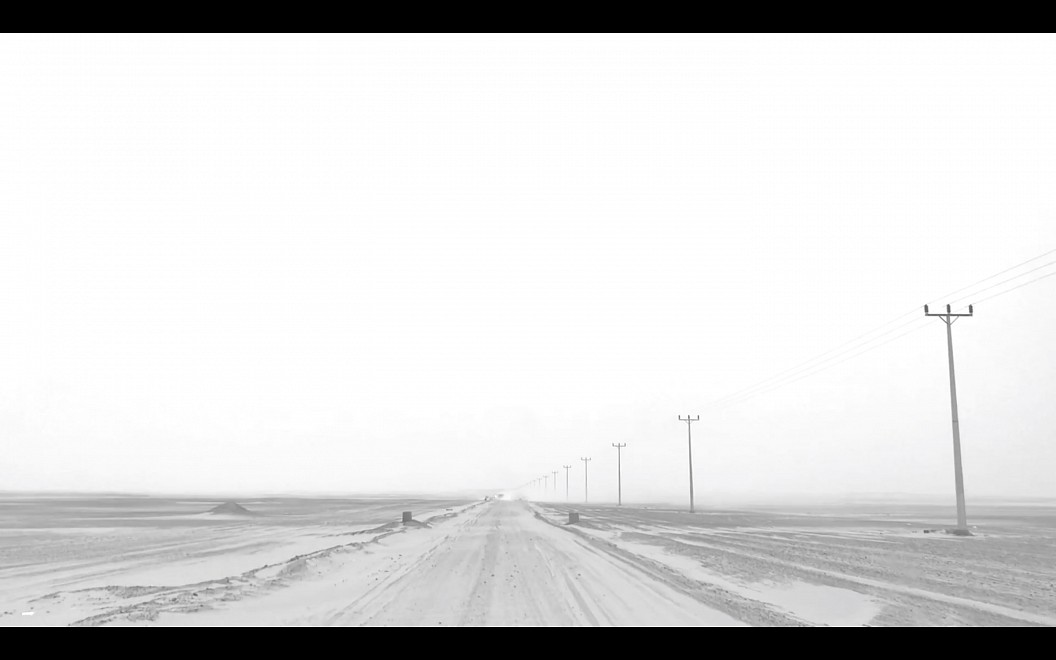“New artistic mediums are rare, and by any measure, video ranks among the defining inventions of any kind in the 20th century. Once relegated to alternative spaces because some didn’t believe it could even be called art, video is now seen in museums and galleries across the world and counts as one of the major mediums of our time.”[1] And that is certainly true in the case of Saudi Arabia, where video art is the most widespread medium and plays a critical role in shaping contemporary artistic practices. The lens, screen and its adjunct technological infiltrations, leave us with a set of subjects that speak to an uncharted continuum of histories. Durational Portrait addresses these subjects in Saudi society by following a historic timeline in four movements; Beginnings (1993, 97, 99), Identity (2000-2010), Connection (2011-2015) and Recovery (2016-2020).
As the fastest medium of consumption, the moving image played a main role in shaping society’s beliefs and behaviors. The works in the show illustrate how artists apply video to reflect, deflect and circumvent a timeline of social, technological and global developments. The works prompt us to consider how society could be influenced, even changed, by the very medium it consumes.
In no way do the works presented offer a comprehensive survey of video art from Saudi Arabia. However, as the first show dedicated to the history of video works in the Kingdom, the exhibit pays tribute to this dominant medium with some never-before seen works by artists who helped establish it as an art form, while exploring the medium’s development amongst subsequent generations and technologies.
In his seminal book The Society of the Spectacle, the notable philosopher and filmmaker Guy Debord considers that “the spectacle is not a collection of images, but a social relation among people, mediated by images.” Collectively, the works in this exhibition offer a durational portrait of a society to which, through the eyes of artists, the medium becomes witness.
Participating Artists:
Sarah Abu Abdullah, Fai Ahmed & Magda Magdy, Fatima Al Banawi, Reem Al Bayyat, Manal Al Dowayan, Abeer Al Fatni, Fahad Al Gethami, Marwah Al Mugait , Reem Al Nasser, Abdulkarim Al Qassem, Abudllah Al Othman, Balqis Al Rashed, Nasser Al Salem, Suleiman Al Salem, Sami Al Turki, Ahaad Alamoudi, Mohammad Alfaraj, Hussain Alismail, Moath Alofi, Khalid Ameer, Dana Awartani, Sultan Bin Fahad, Bricklab, Dr. Effat Fadagh, Tarfa Fahad, Ajlan Gharem, Sarah Ibrahim, Aziz Jamal, Ahmed Mater, Eyad Mghazel, Anhar Salem, Faisal Samra, Hamza Serafi, Bakr Sheykhoun, Muhannad Shono, Alaa Tarabzouni, Ayman Yossri, Ayman Zedani, Lina Gazzaz, Diya Youssef, Qamar Abdulmalik, Mohammed Hammad, Zahar Al Dabbagh, Sara Alghesheyan, and Ftoon AlThaedi
*
[1] Artnews, Alex Greenberger, In Ambitious New Book, Curator Barbara London Charts Video Art’s Rise as One of Today’s Dominant Mediums, January 13, 2020.




